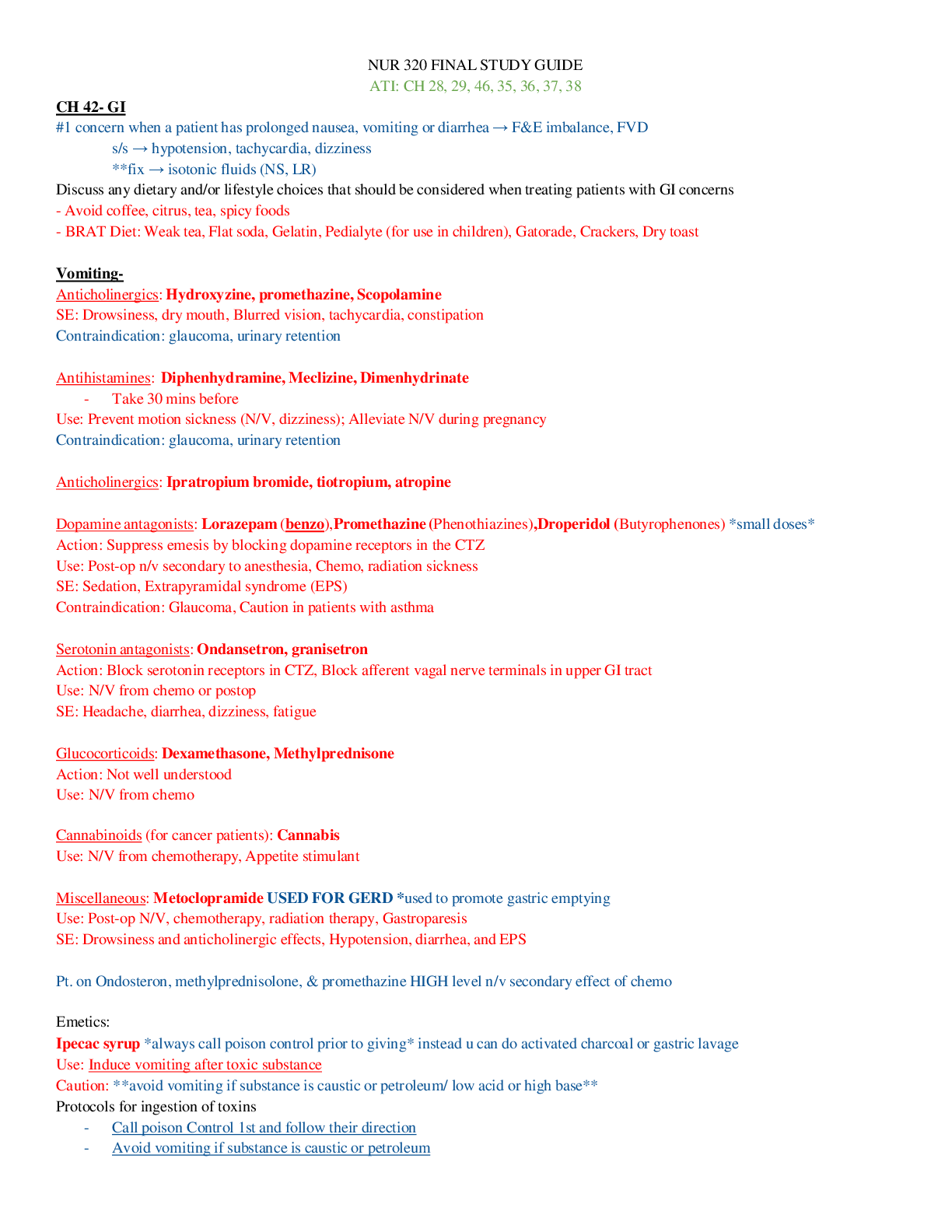Pharmacology > STUDY GUIDE > HCO 3 ATI Pharmacology Proctored 2 REVIEW QUESTIONS SIMPLE, CORRECT AND EASY TO UNDERSTAND (All)
HCO 3 ATI Pharmacology Proctored 2 REVIEW QUESTIONS SIMPLE, CORRECT AND EASY TO UNDERSTAND
Document Content and Description Below
HCO 3ATI Pharmacology Proctored 2.docx ATI Pharmacology REVIEW QUESTIONS, SIMPLE, CORRECT AND EASY TO UNDERSTAND IMPORTANT LAB VALUES Sodium (Na): 136-145 mEq/L Calcium: 9.0-10 m... g/dL Chloride: 98-106 mEq/L Bicarb HCO3: 21-28 mEq/L Potassium: 3.5-5.0 mg/L Phosphorus PO4 : 3.0-4.5 mg/dL Magnesium: 1.3- 2.1 mEq/L Cholesterol: o Total <200mg/dL o LDL ("bad") <100 o HDL ("good) >40 o Triglycerides <150mg/dL Liver enzymes o ALT/SGPT 8-20 units/L o AST/SGOT 5-40 units/L o ALP 42-128 units/L o Total protein 6-8 gm/dL Pancreatic enzymes o Amylase 56-90 IU/L o Lipase 0-110 units/L o Prothrombin time 0.8-1.2 Glucose: Preprandial (fasting) 70-110 mg/dL Postprandial 70-140 mg/dL RBC: Females 4.2-5.4 million/uL; Males 4.7-6.1 million /uL WBC: 5000 -10,000 Iron: Females 60-160 mcg/dL; Males 80-180 mcg/dL Platelets: 150,000-450,000 Hemoglobin (Hgb): Females 12-16 g/dL; Males 14-18 g/dL Hematocrit (Hct): Females 37-47%;Males 42-52% Prothrombin Time (PT): 11-14 seconds: therapeutic range 1.5-2x normal or control value Urine specific gravity: 1.015-1.030 Urine pH: average 6.0; range 4.6-8.0 BUN: 10-20 mg/dL Creatinine: female 0.5-1.1, males 0.6 - 1.2 mg/dL; Creatinine phosphokinase MB (CK-MB): normal 30-170 units/L *increase 4-6 hrs after MI and remains elevated 24-72hrs Troponin normal: <0.2 ng/dL *gold standard for MI Safe Medication Administration and Error Reduction: Reviewing a Medication Administration Record (RN QSEN - Teamwork and Collaboration, Active Learning Template - Nursing Skill, RM Pharm RN 7.0 Ch. 2) 1) Report all errors, and implement corrective measures immediately 2) Complete an incident report within the time frame the facility specifies, usually 24 hr. 3) Do not reference or include this report in the client's medical record 4) Evaluate clients' responses to medications, and document and report them. 5) Identify side and adverse effects, and document and report them. Chapter 12 - Substance Use Disorders: Therapeutic effect of chlordiazepoxide (Ch. 12 pg.85) - Substance Use Disorders: Smoking cessation using bupropion (Ch. 12 pg. 87) - Substance Use Disorders: Treatment for Cocaine Toxicity (Active Learning Template - System Disorder, RM Pharm RN 7.0 Ch. 12) 1) First line treatment = Benzodiazepines (to reduce CNS & cardiovascular effects) 2) Chlordiazepoxide, diazepam, lorazepam, clorazepate, oxazepam 3) Provide seizure precautions 4) Manifestations include nausea; vomiting; tremors; restlessness and inability to sleep; depressed mood or irritability; increased heart rate, blood pressure, respiratory rate, and temperature; diaphoresis; and tonic-clonic seizures. Illusions are also common 5) Monitor vitals and neurological status on a regular basis Chapter 13 - Chronic Neurologic Disorders: Adverse effects of neostigmine (Ch. 13 pg. 91) Adverse effects: Excessive muscarinic stimulation Cholinergic crisis - Chronic Neurologic Disorders: Medications that interact with Carbamazepine (Ch. 13 pg. 99) - Carbamazepine causes a decrease in the effects of oral contraceptives and warfarin due to stimulation of hepatic medication-metabolizing enzymes. - Grapefruit juice inhibits metabolism, and thus increases carbamazepine levels. - Phenytoin and phenobarbital decrease effects of carbamazepine. - Chronic Neurologic Disorders: Adverse Effects of Phenytoin (RN QSEN - Safety, Active Learning Template - Medication, RM Pharm RN 7.0 Ch. 13) 1) CNS effects: Nystagmus, sedation, ataxia, double vision, cognitive impairment 2) Gingival hyperplasia: Softening and overgrowth of gum tissue, tenderness, and bleeding gums (consider folic acid supplement) 3) Skin rash (stop medication if rash appears) 4) Cardiovascular effects: dysrhythmias, hypotension (administer slow; 50 mg/min and in dilute solution) 5) Endocrine and other effects: Coarsening of facial features, hirsutism, and interference with vitamin D metabolism (consume enough Vitamin D) 6) Interference with vitamin K-dependent clotting factors causing bleeding in newborns. - Miscellaneous Central Nervous System Medications: Treating Malignant Hyperthermia (Active Learning Template - Medication, RM Pharm RN 7.0 Ch. 15) 1) Depolarizing neuromuscular blockers: Succinylcholine 2) Manifestations include muscle rigidity accompanied by increased temperature, as high as 43°C (109.4°) 3) Administer oxygen at 100%. 4) Initiate cooling measures including administration of iced 0.9% sodium chloride, applying a cooling blanket, and placing ice bags in groin and other areas 5) Administer dantrolene to decrease metabolic activity of skeletal muscle. - Airflow Disorders: Therapeutic Action of Montelukast (Active Learning Template - Medication, RM Pharm RN 7.0 Ch. 17) 1) Leukotriene modifiers: suppress the effects of leukotrienes, thereby reducing inflammation, bronchoconstriction, airway edema, and mucus production. 2) Long-term therapy of asthma in adults and children, and to prevent exercise-induced bronchospasm 3) Depending on therapeutic intent, effectiveness is evidenced by long-term control of asthma 4) Advise clients to take montelukast once daily at bedtime. 5) For exercise-induced bronchospasm, take 2 hr. before exercise. Instruct clients taking daily montelukast to not take an additional dose for exercise induced bronchospasm - Upper Respiratory Disorders: Client Teaching Prior to Allergy Testing (Active Learning Template - Medication, RM Pharm RN 7.0 Ch. 18) 1) Medications that can interfere with skin tests include: antihistamines, Tricyclic antidepressants, heartburn medications, asthma medication omalizumab (Xolair) 2) May need to discontinue certain meds 10 days prior 3) If you are running a fever or have an attack of hay fever or asthma, testing should be delayed 4) Do not change your diet before the test. - Medications Affecting Blood Pressure: Titrating Continuous Nitroprusside Infusion (RN QSEN - Safety, Active Learning Template - Medication, RM Pharm RN 7.0 Ch. 20) 1) Nitroprusside (centrally-acting vasodilator) 2) Direct vasodilation of arteries and veins resulting in rapid reduction of blood pressure (decreased preload and after load 3) Used for hypertensive crisis [Show More]
Last updated: 1 year ago
Preview 1 out of 20 pages
Instant download
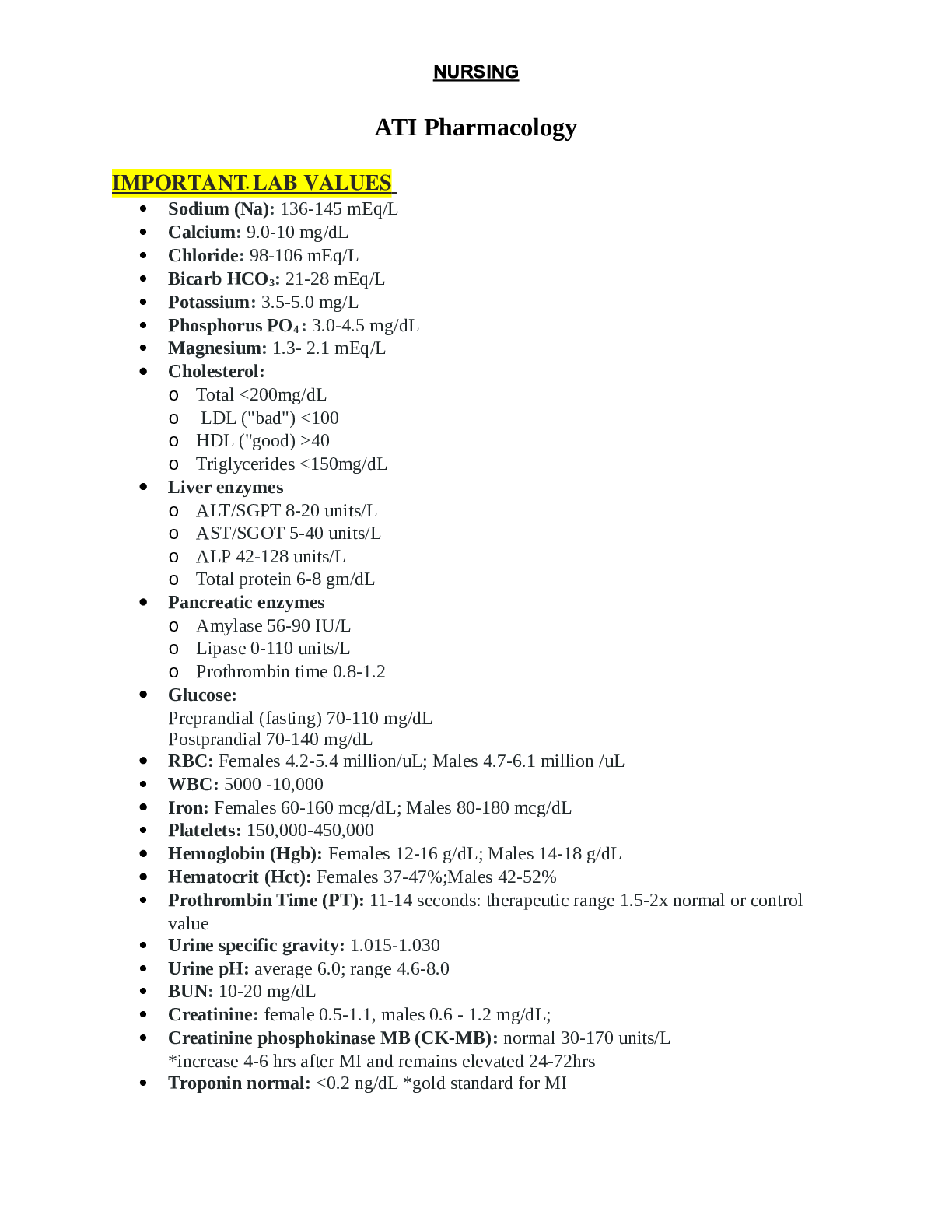
Instant download
Reviews( 0 )
Document information
Connected school, study & course
About the document
Uploaded On
Aug 31, 2021
Number of pages
20
Written in
Additional information
This document has been written for:
Uploaded
Aug 31, 2021
Downloads
0
Views
42

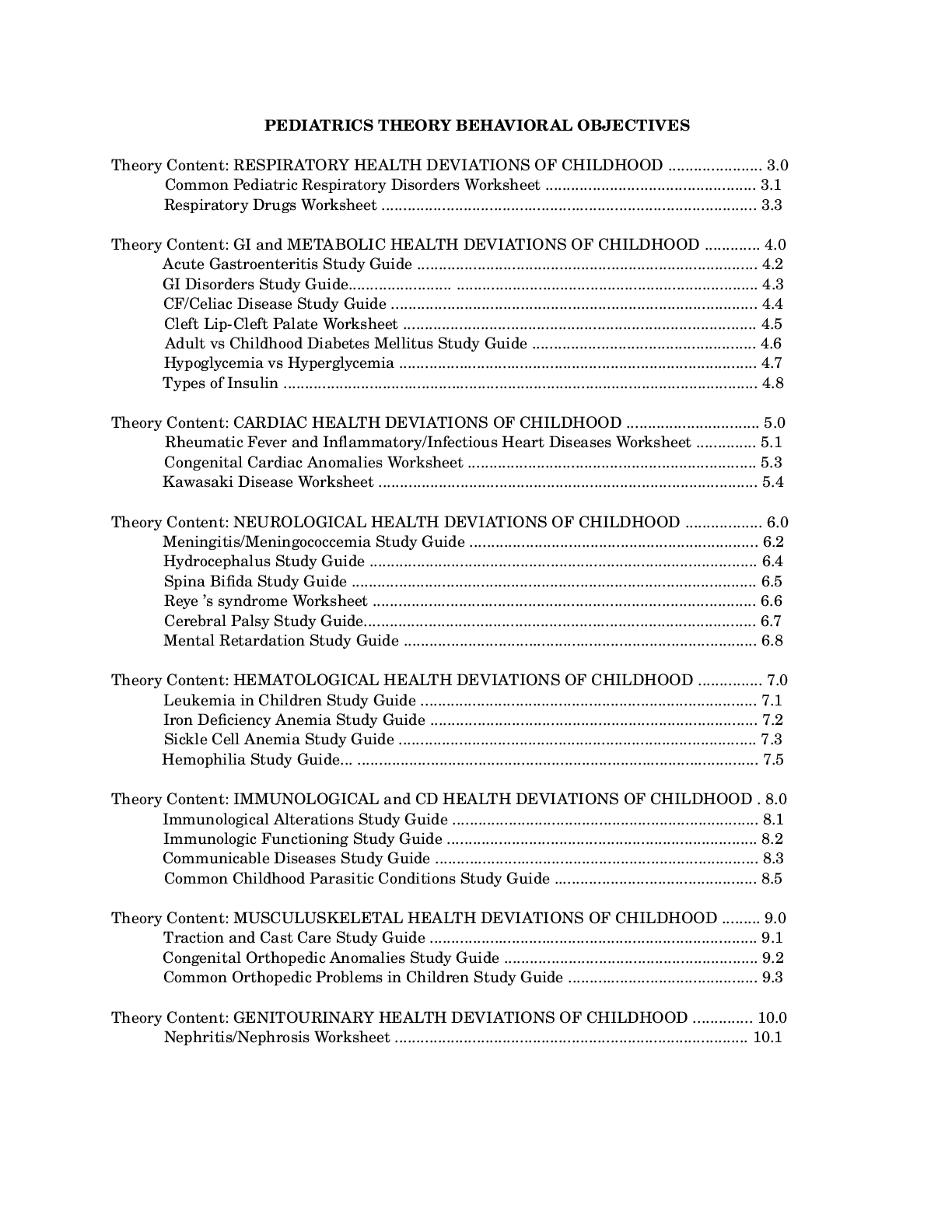


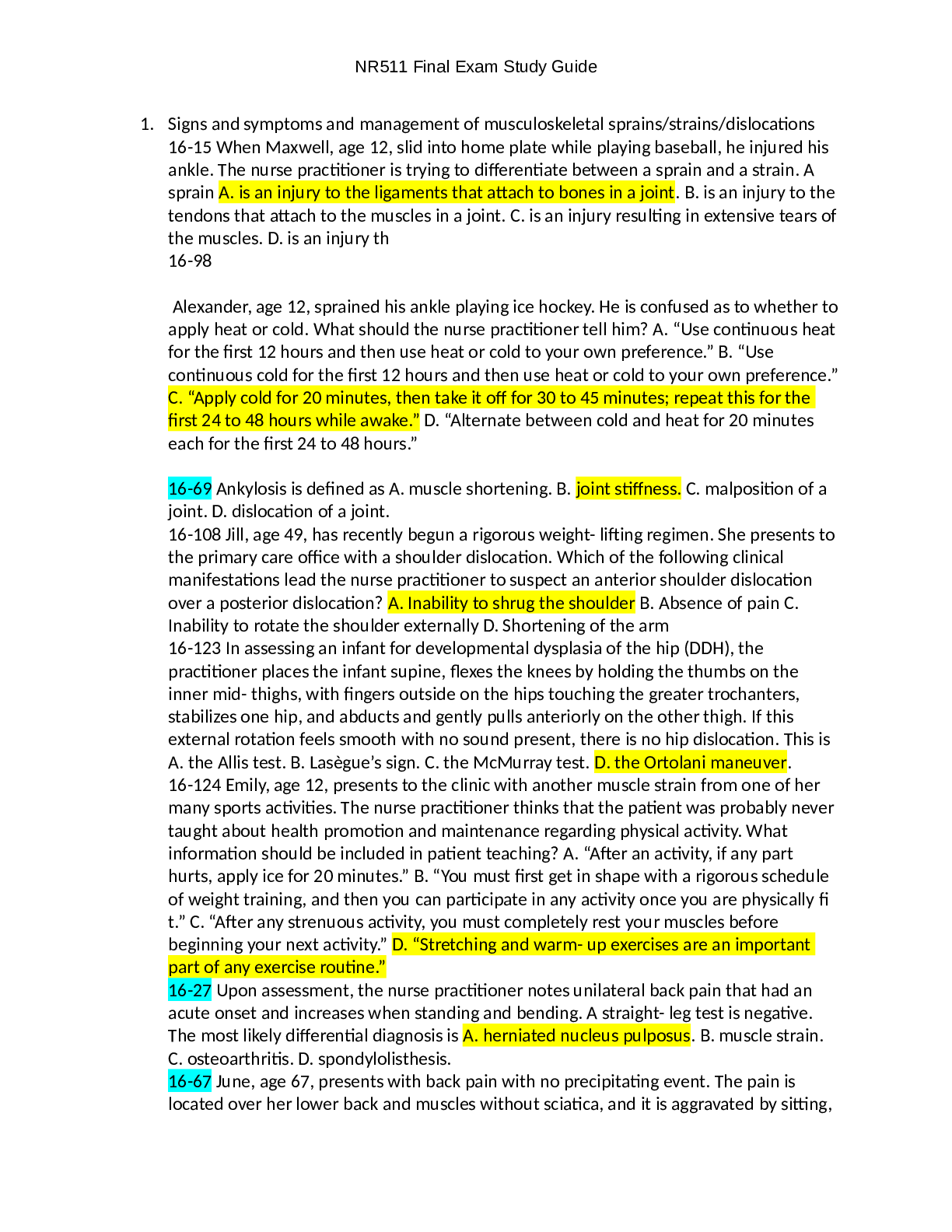


.png)
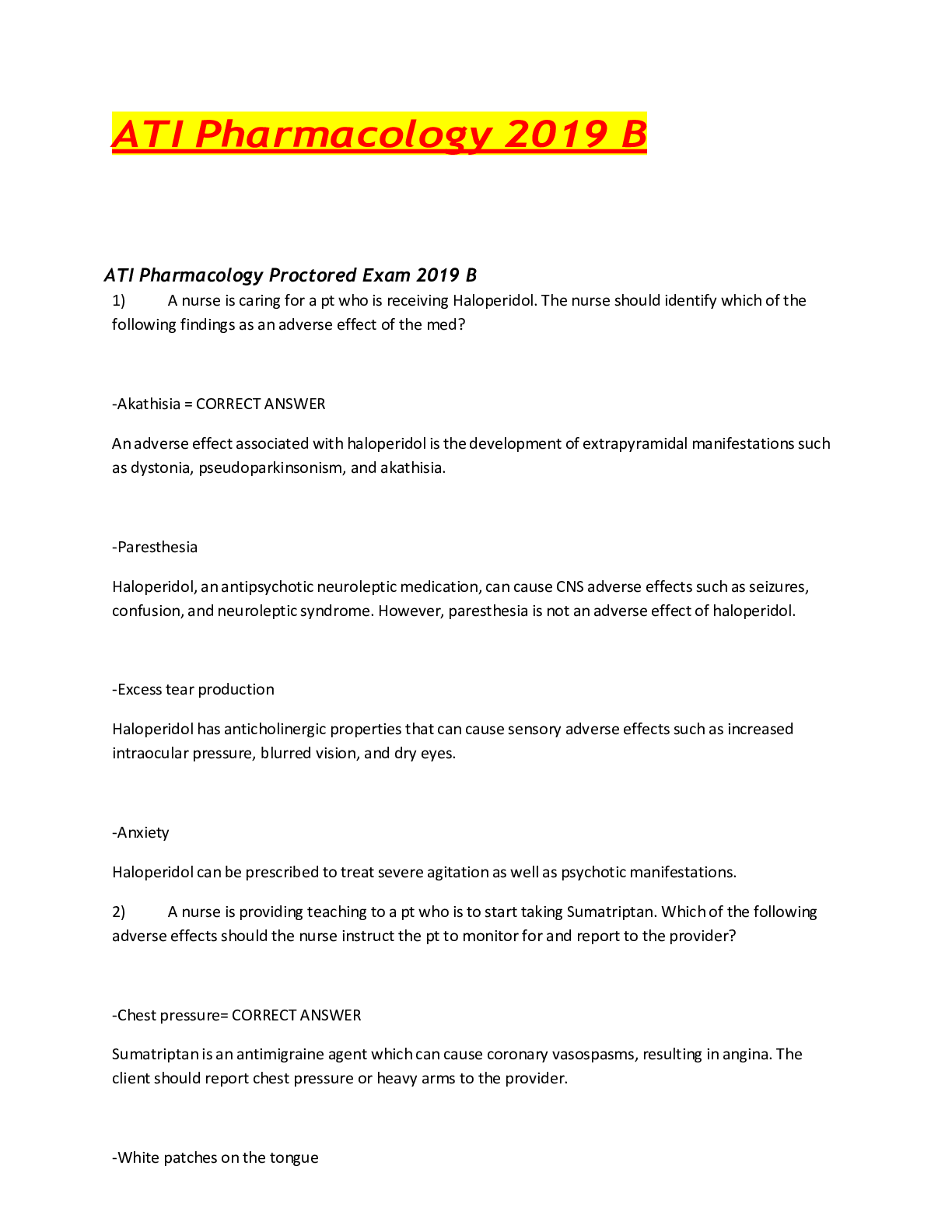
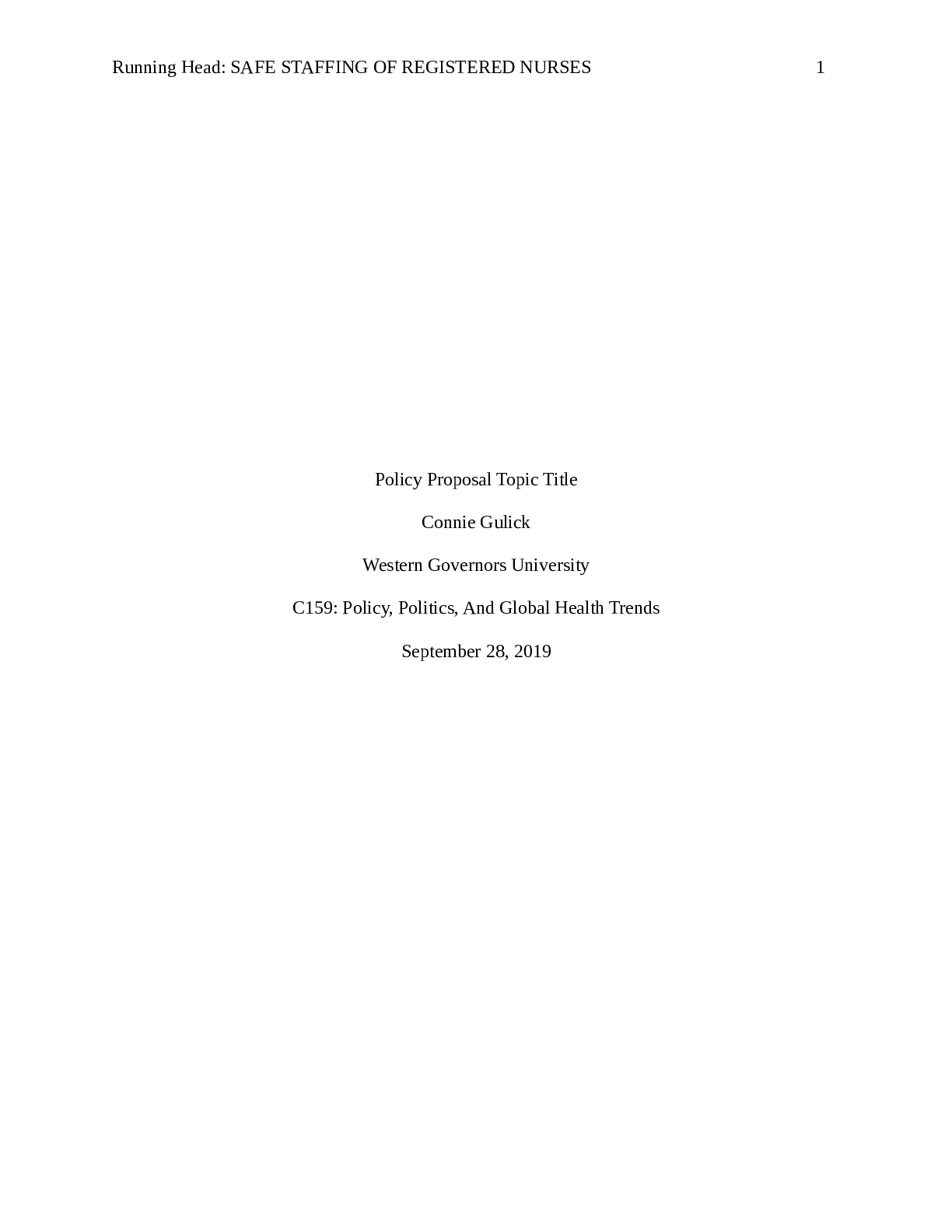
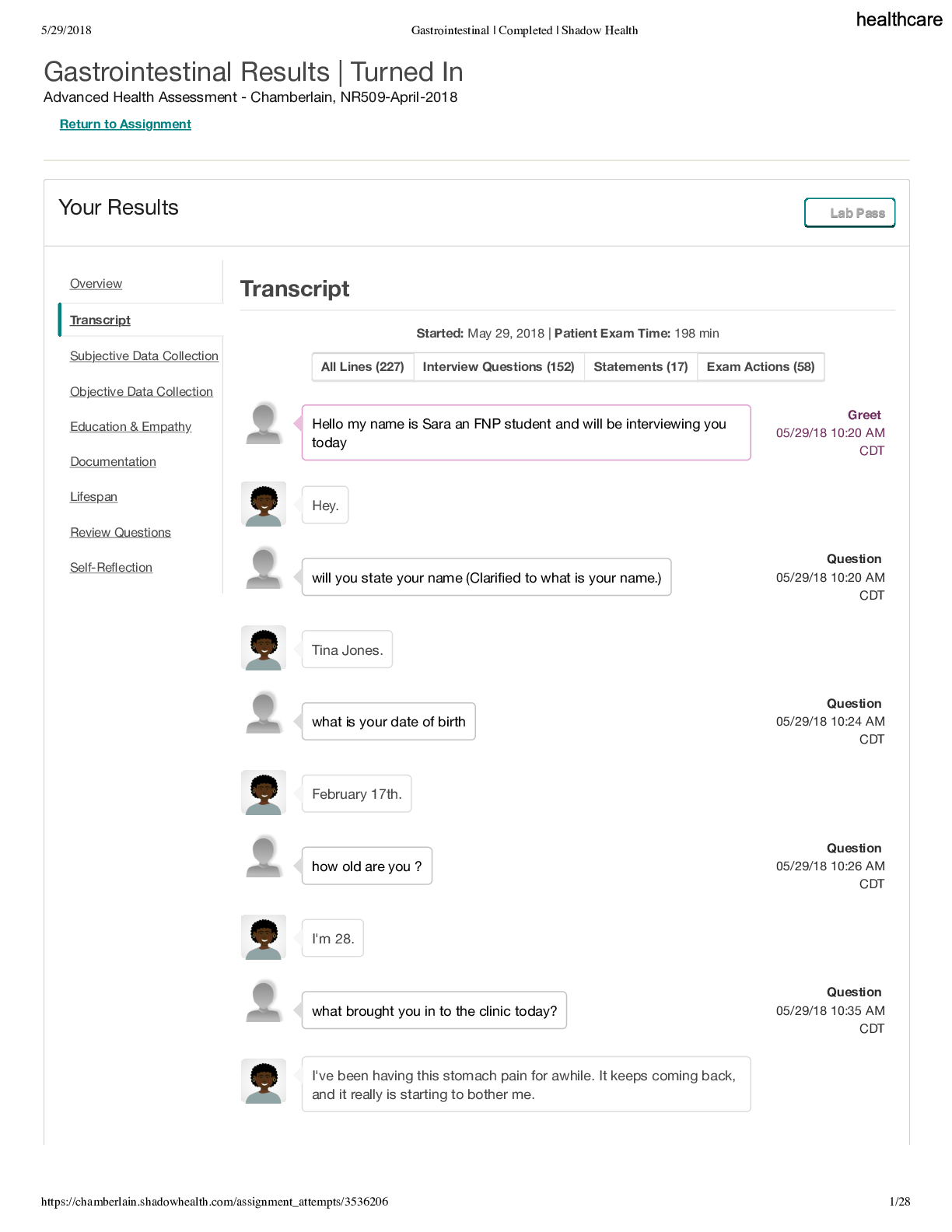
.png)

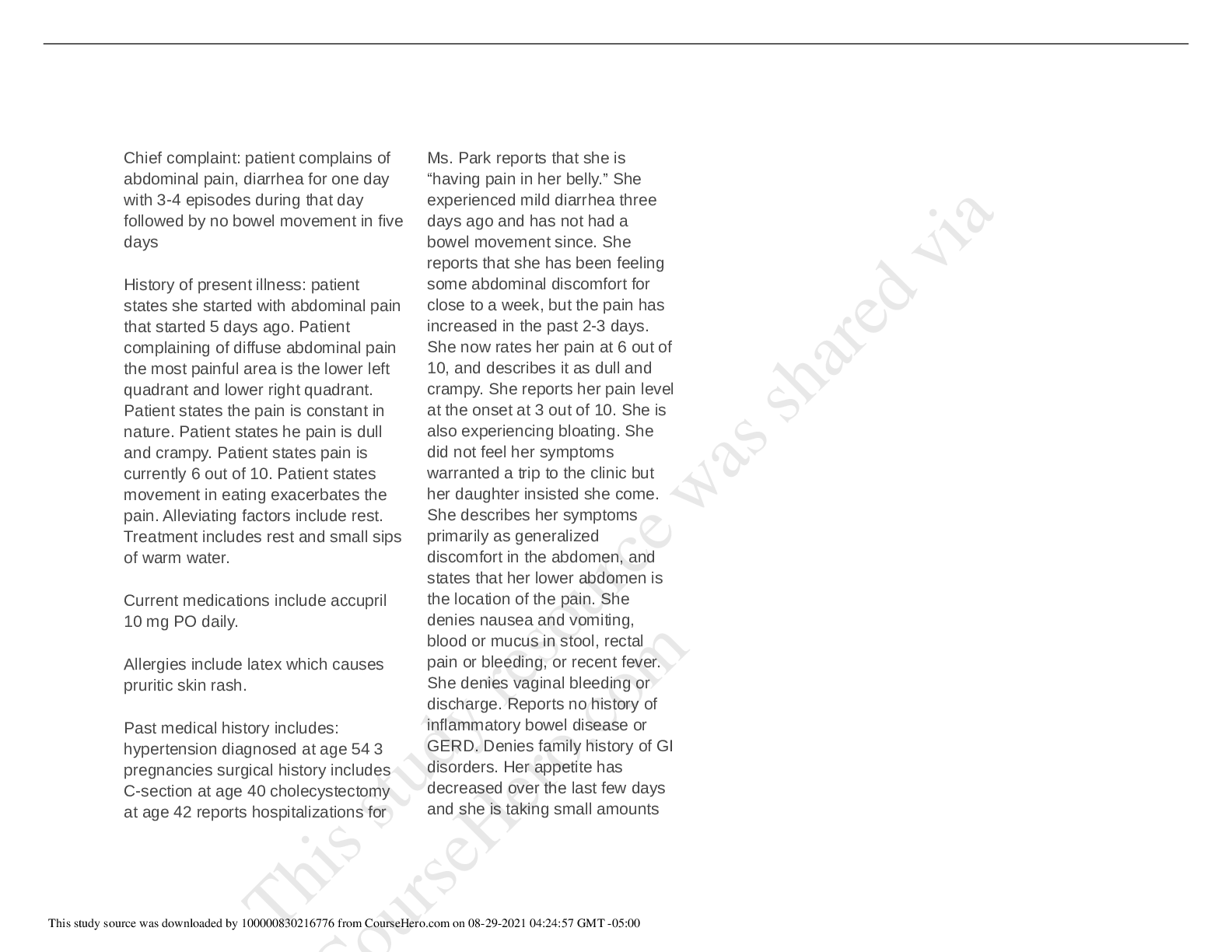
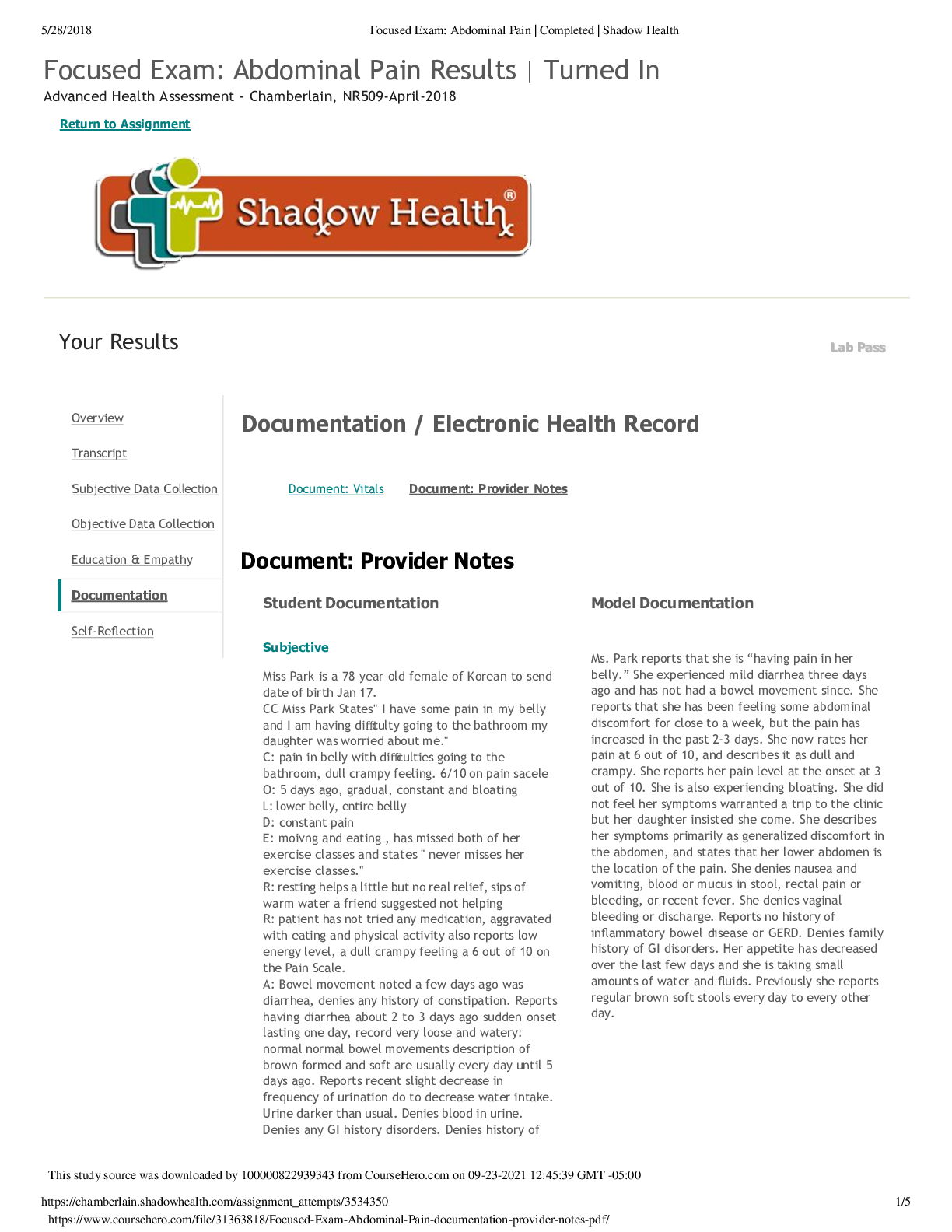
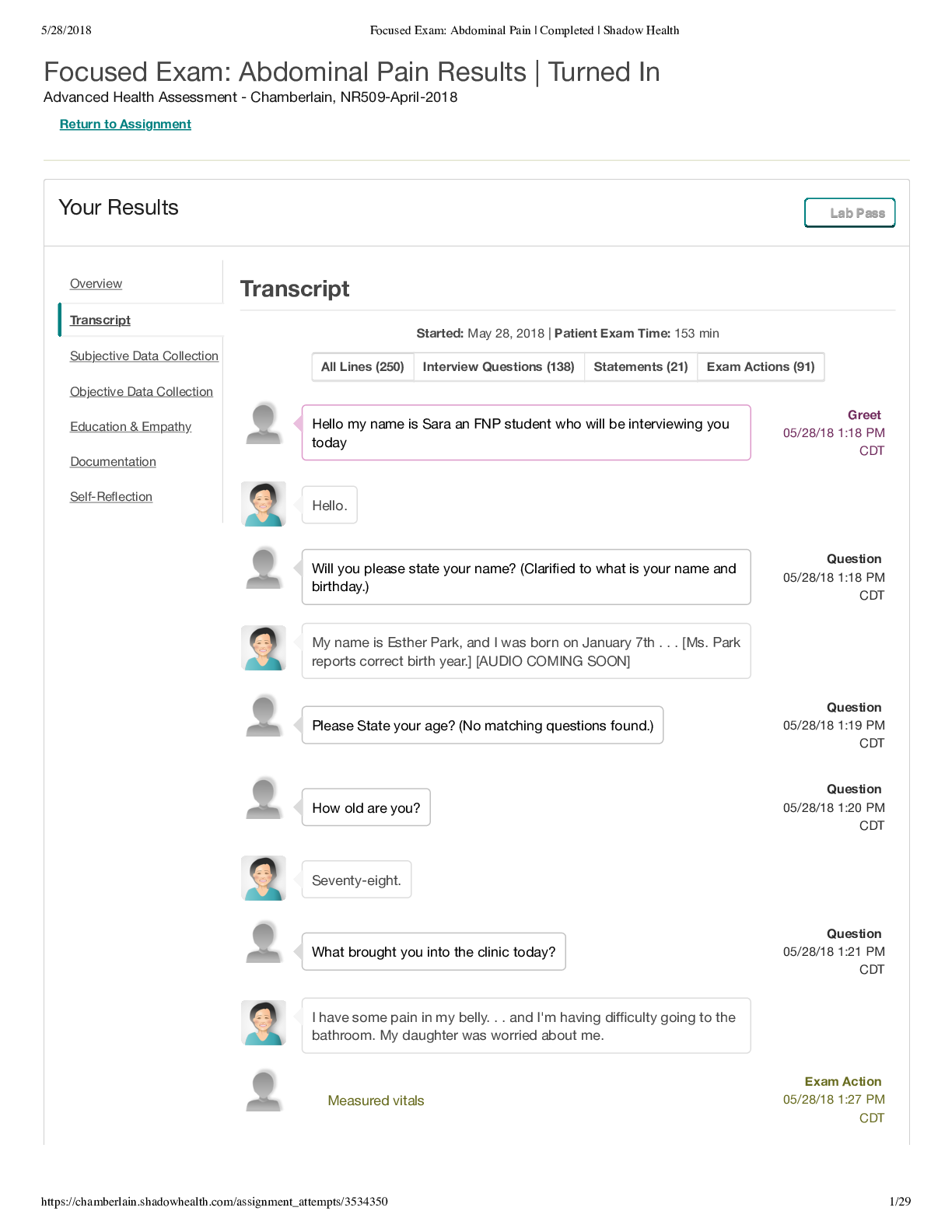

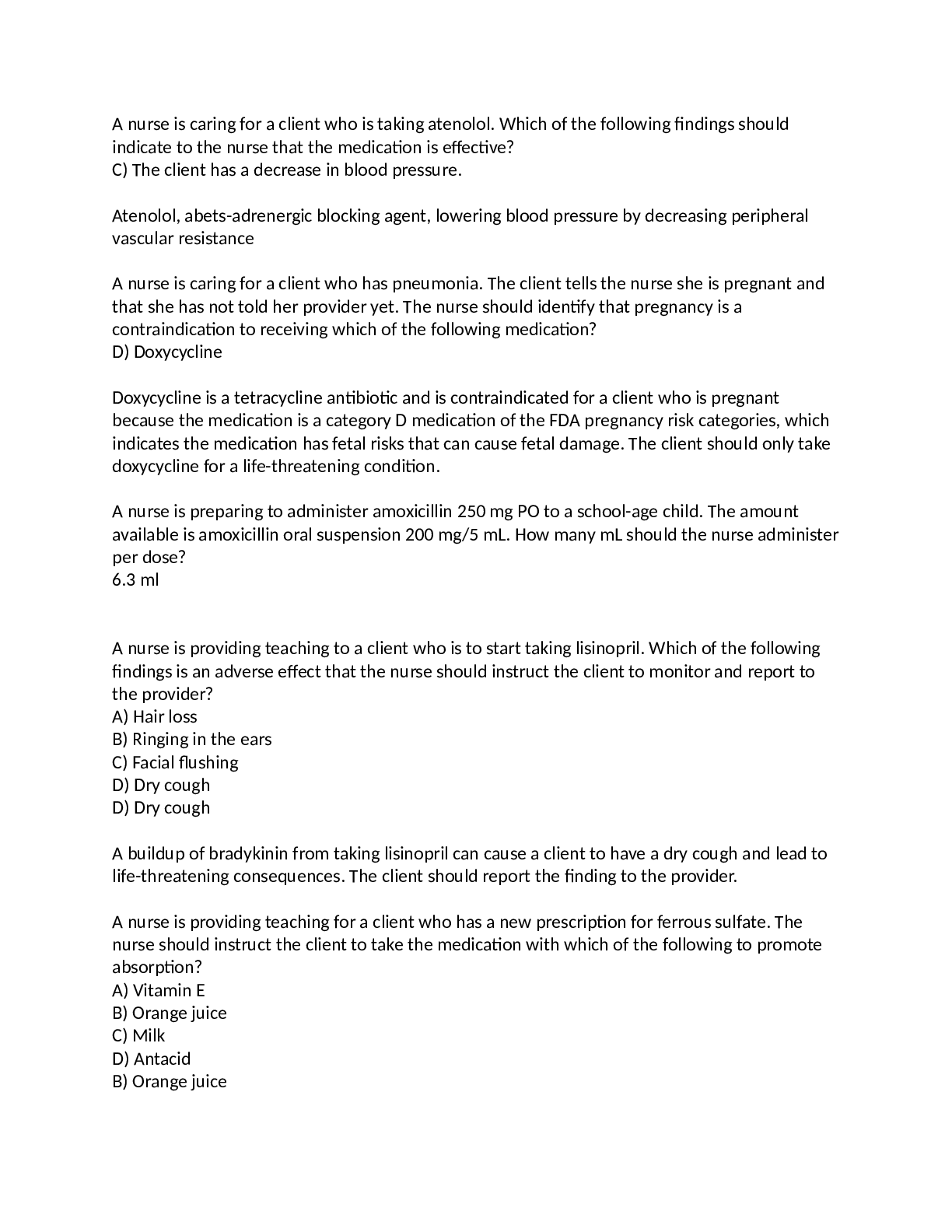
.png)
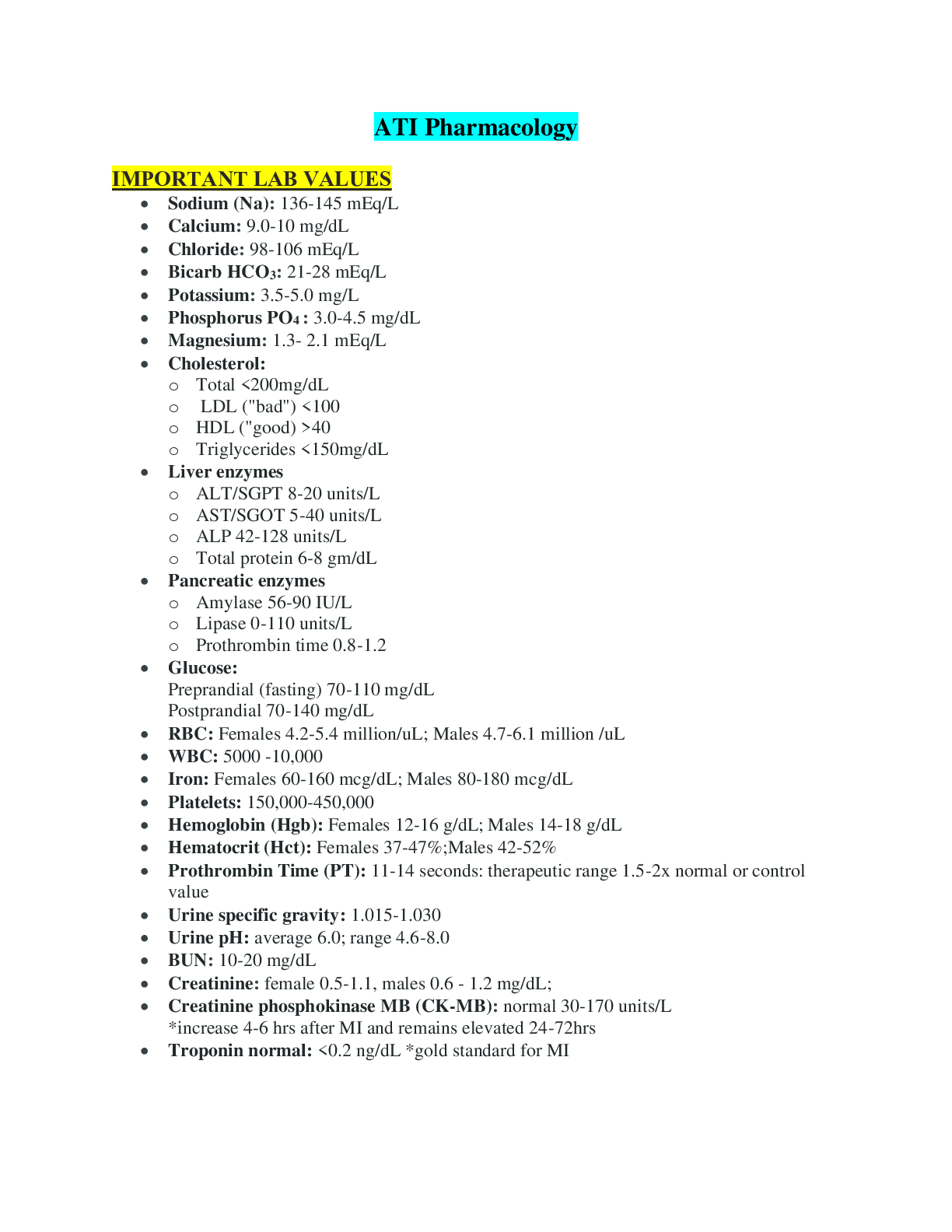
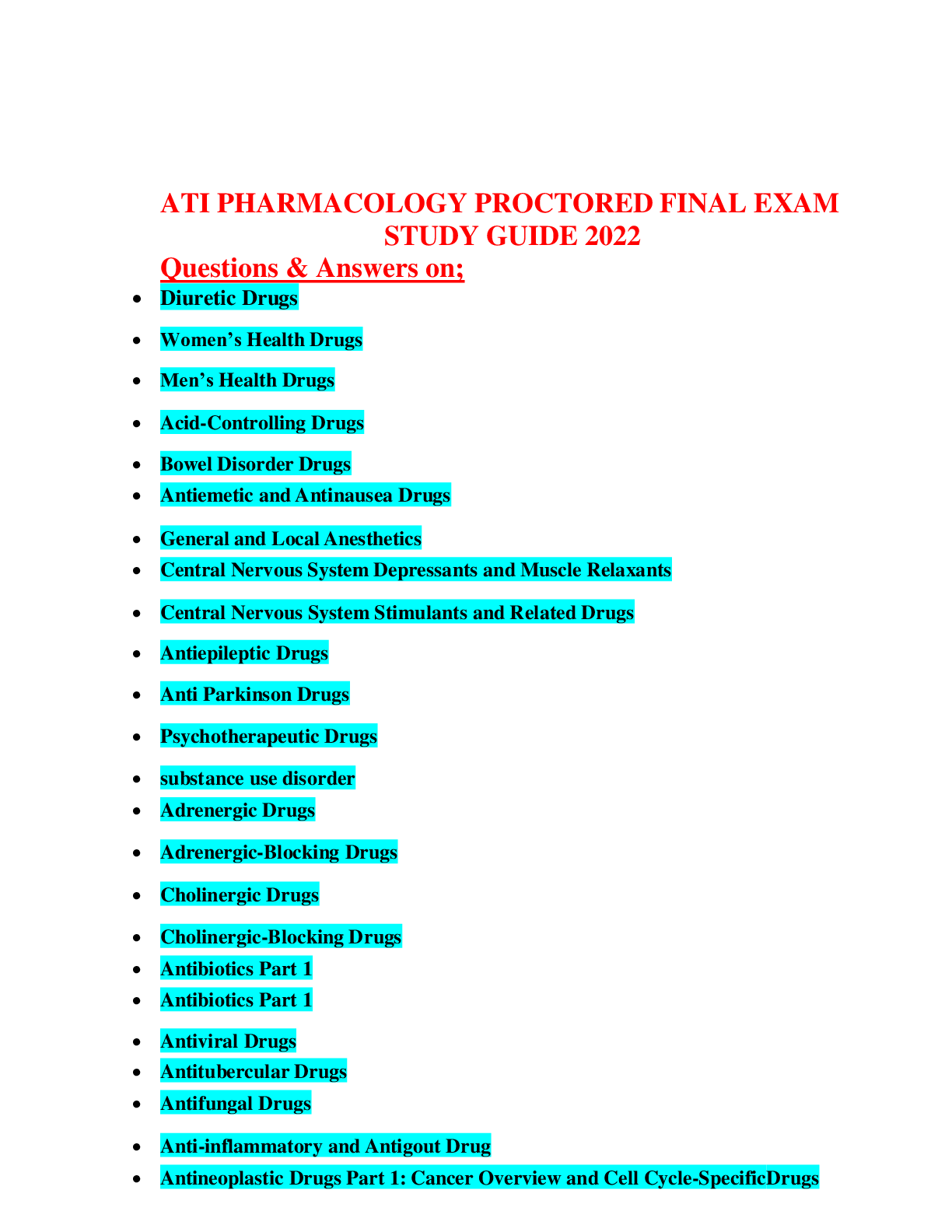

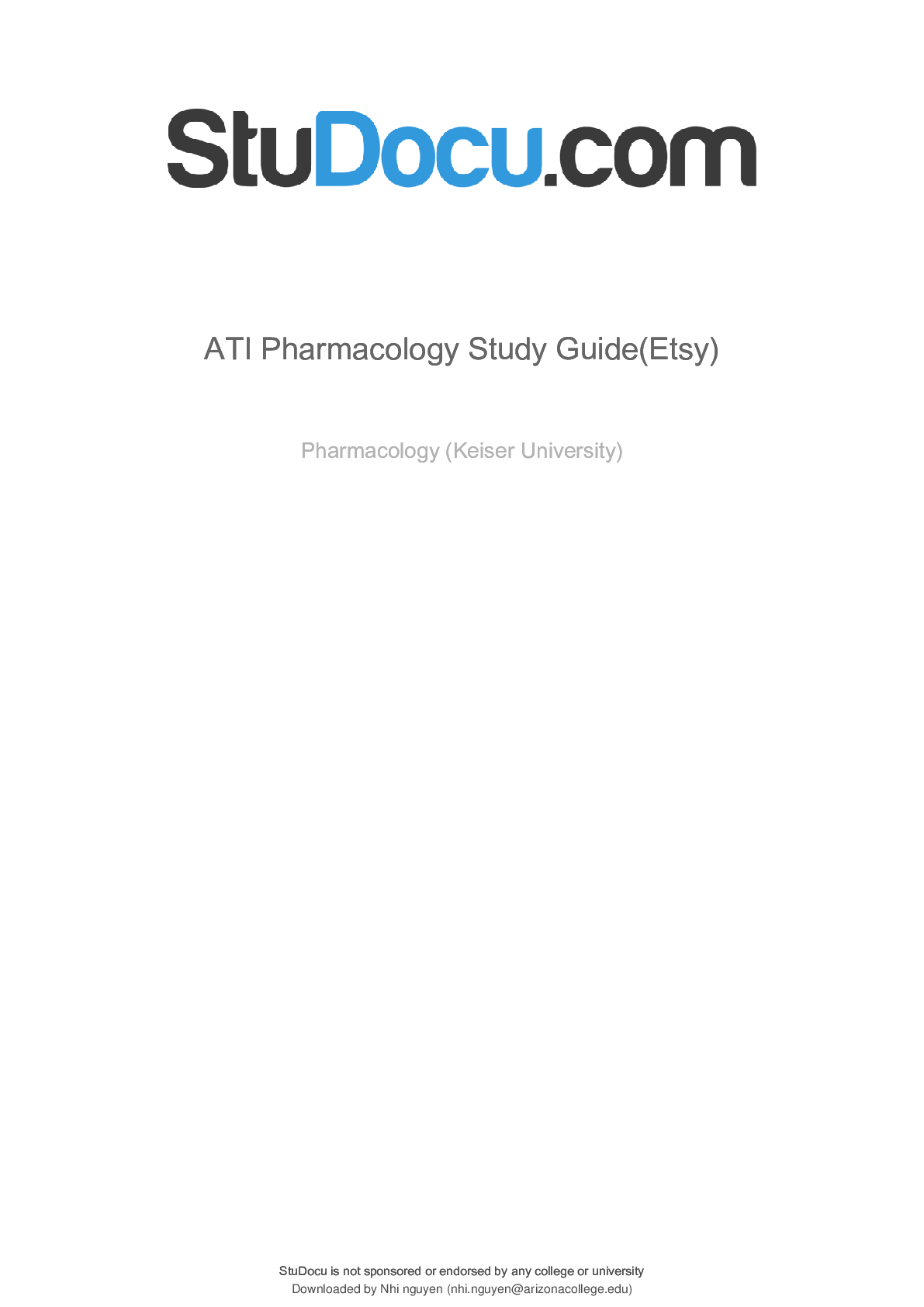
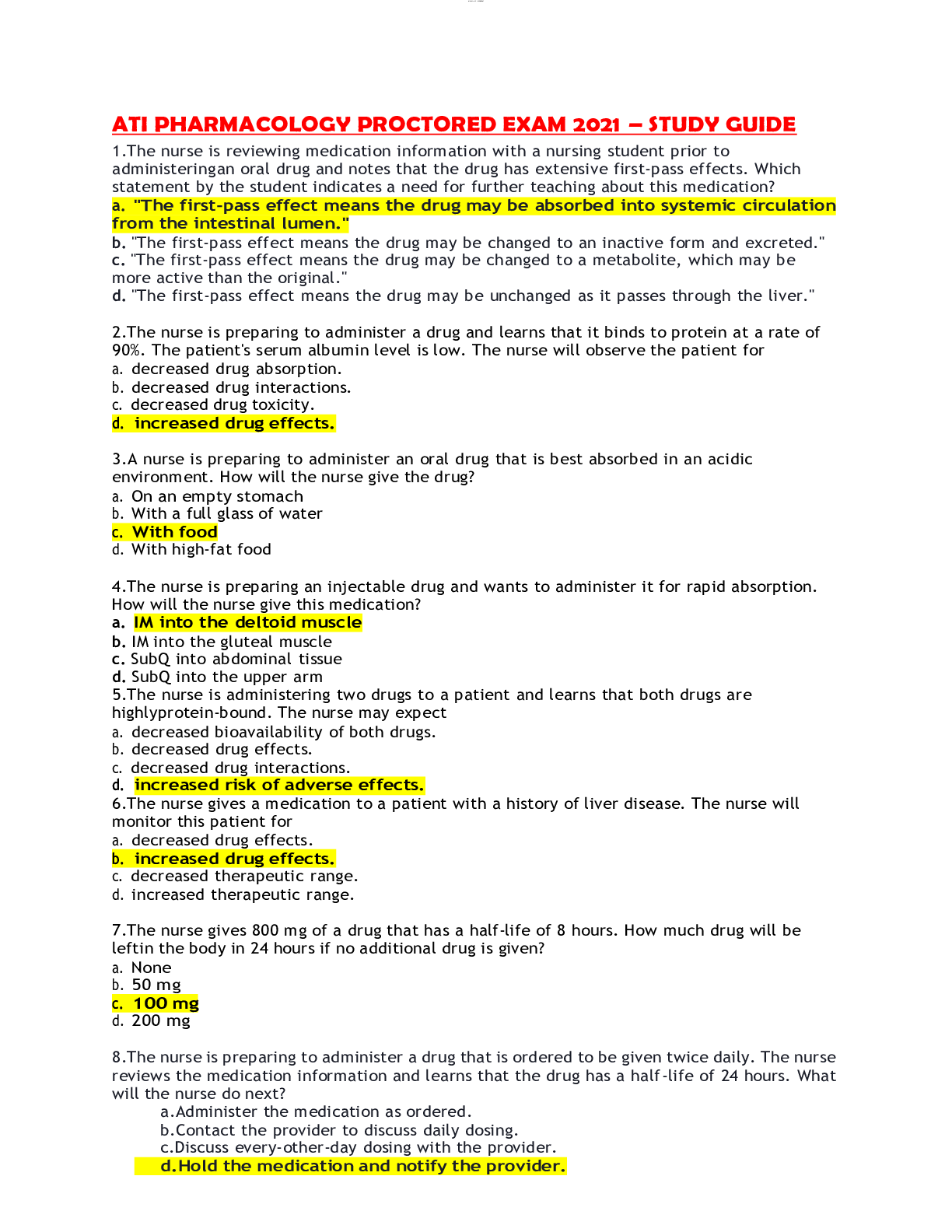
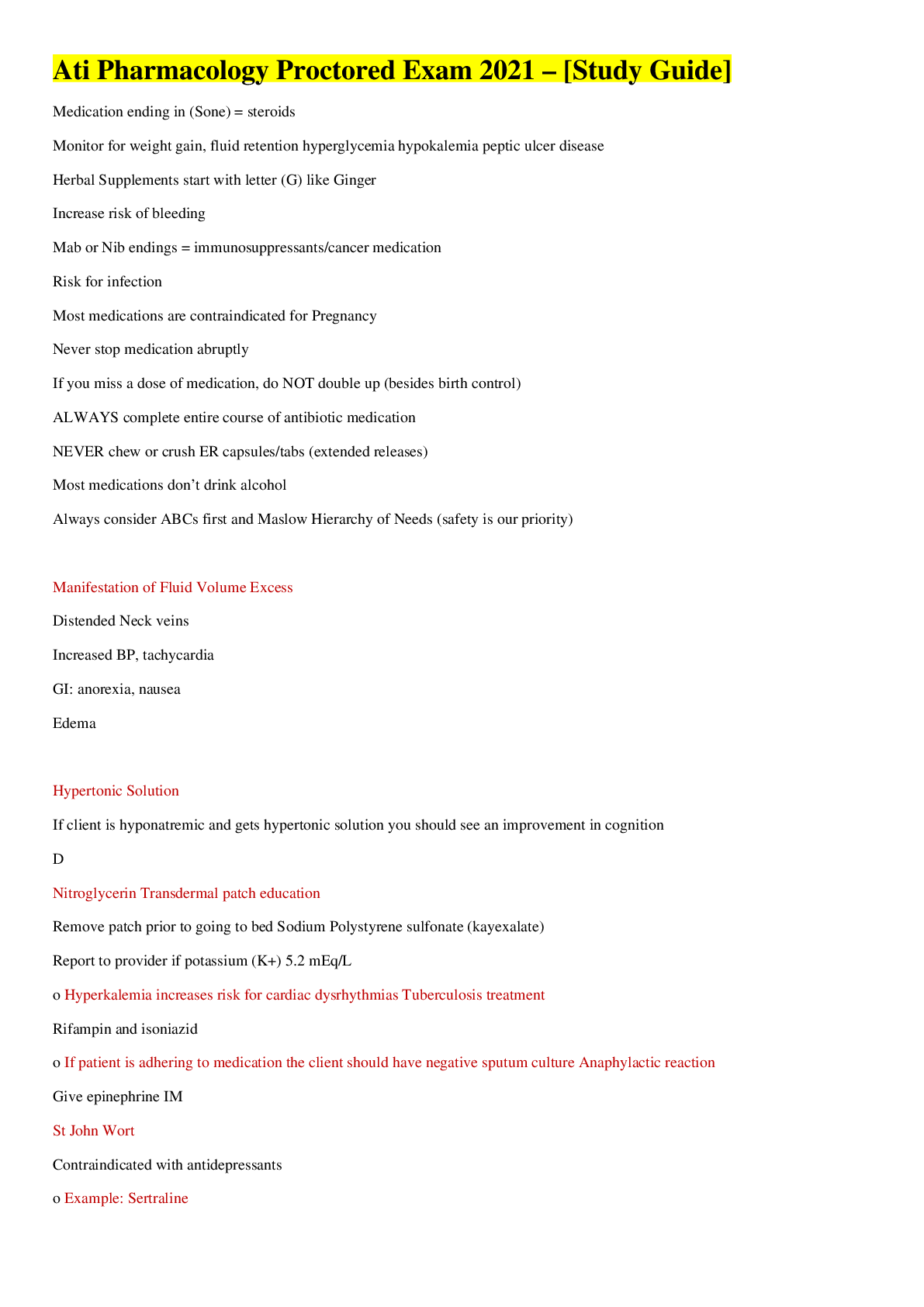
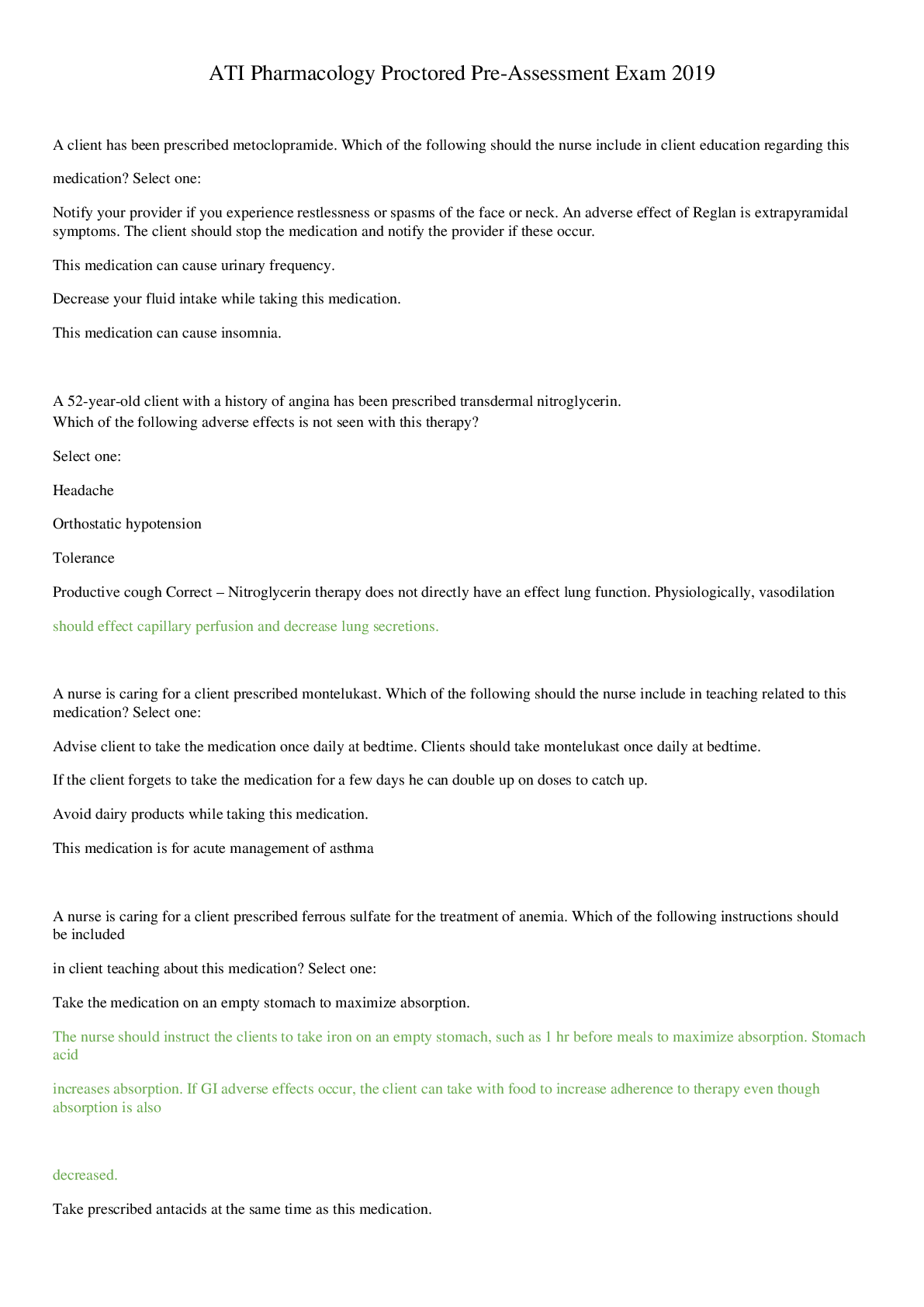
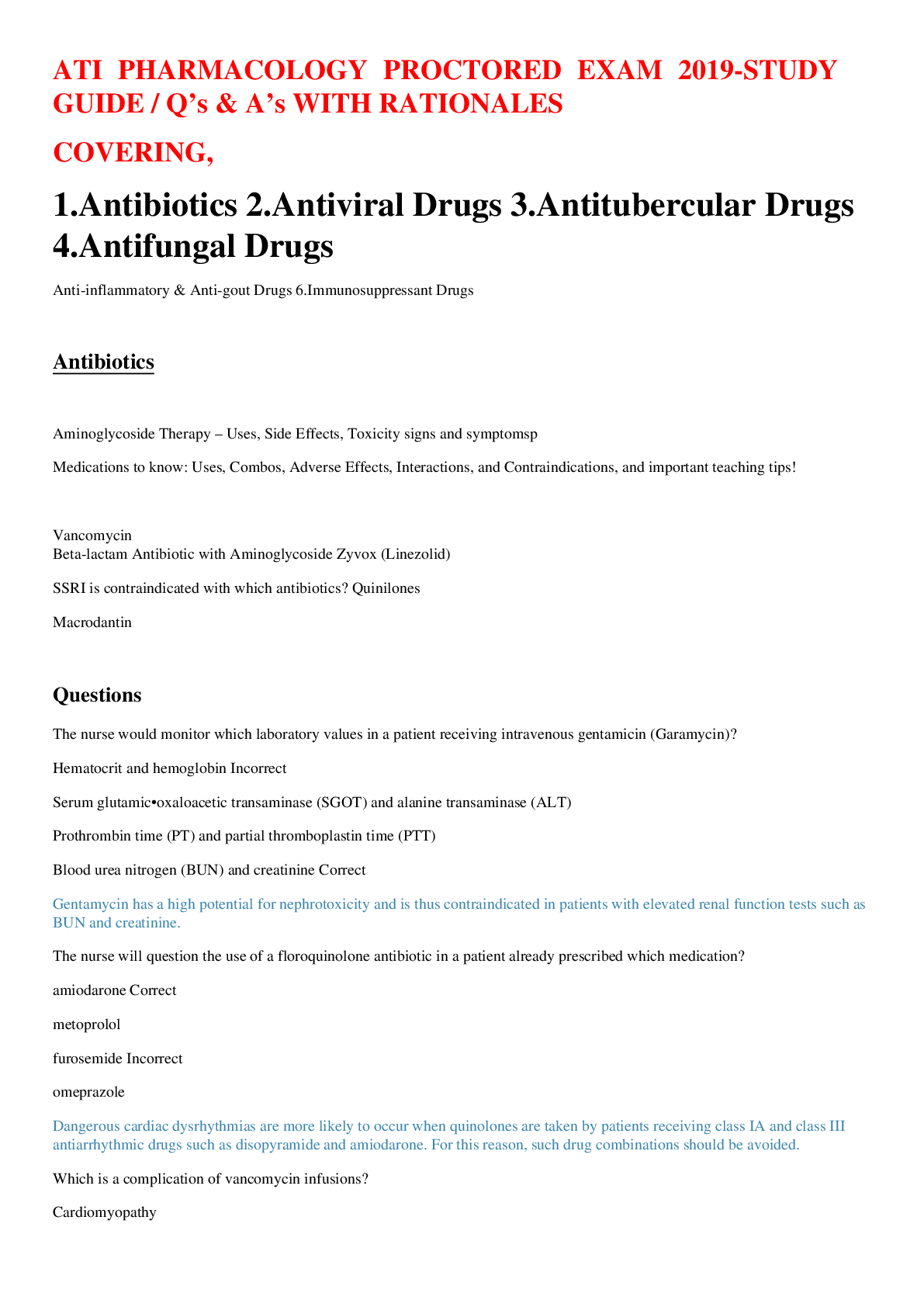
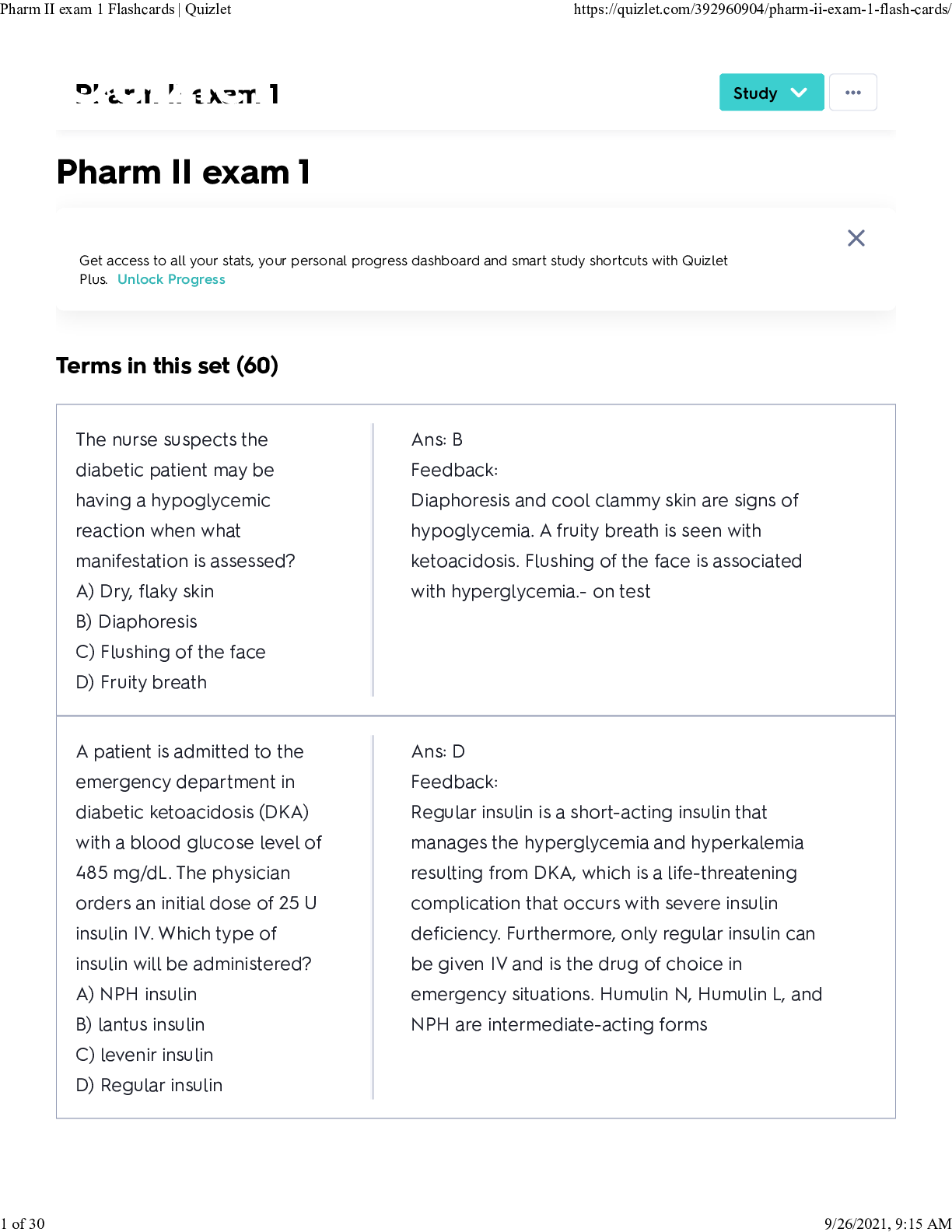
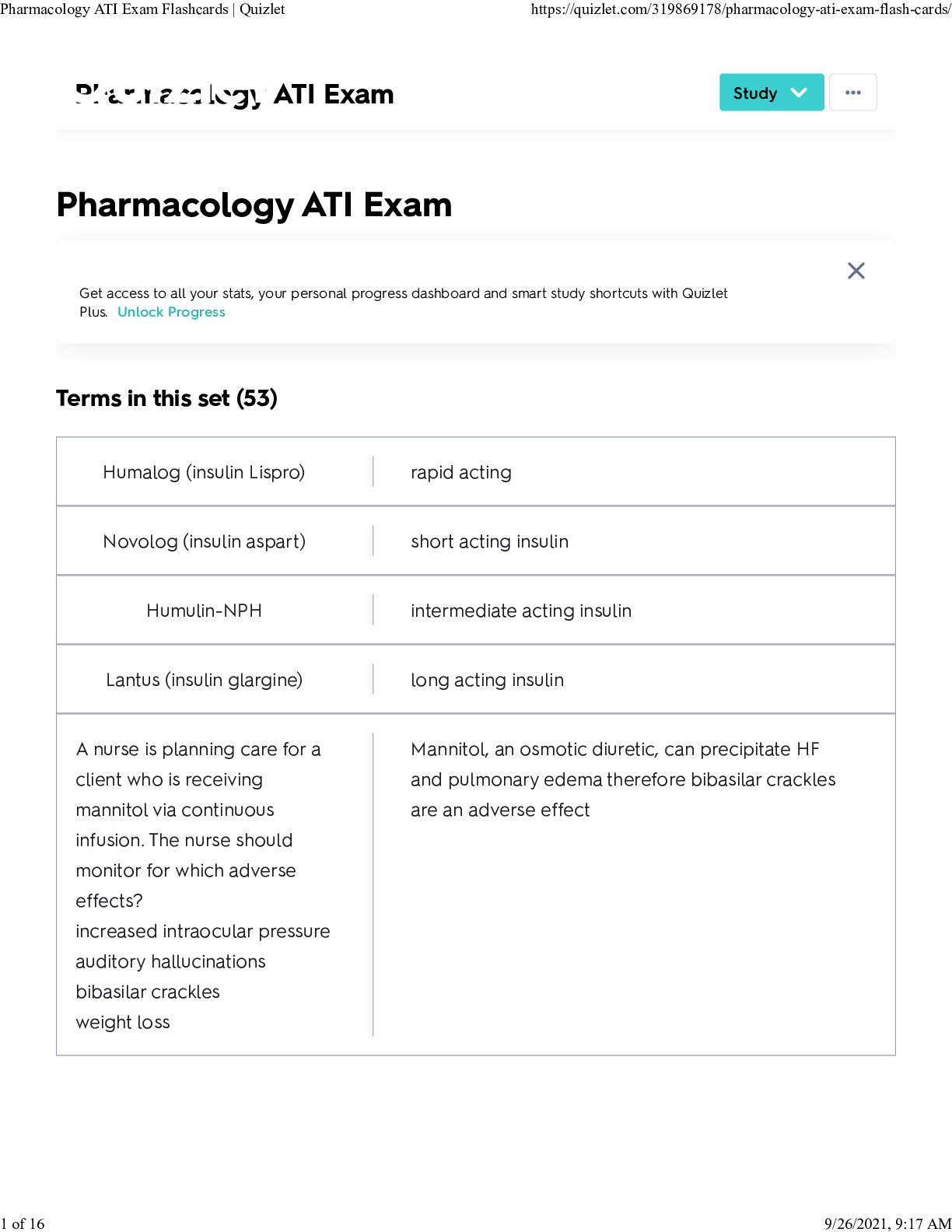

.png)
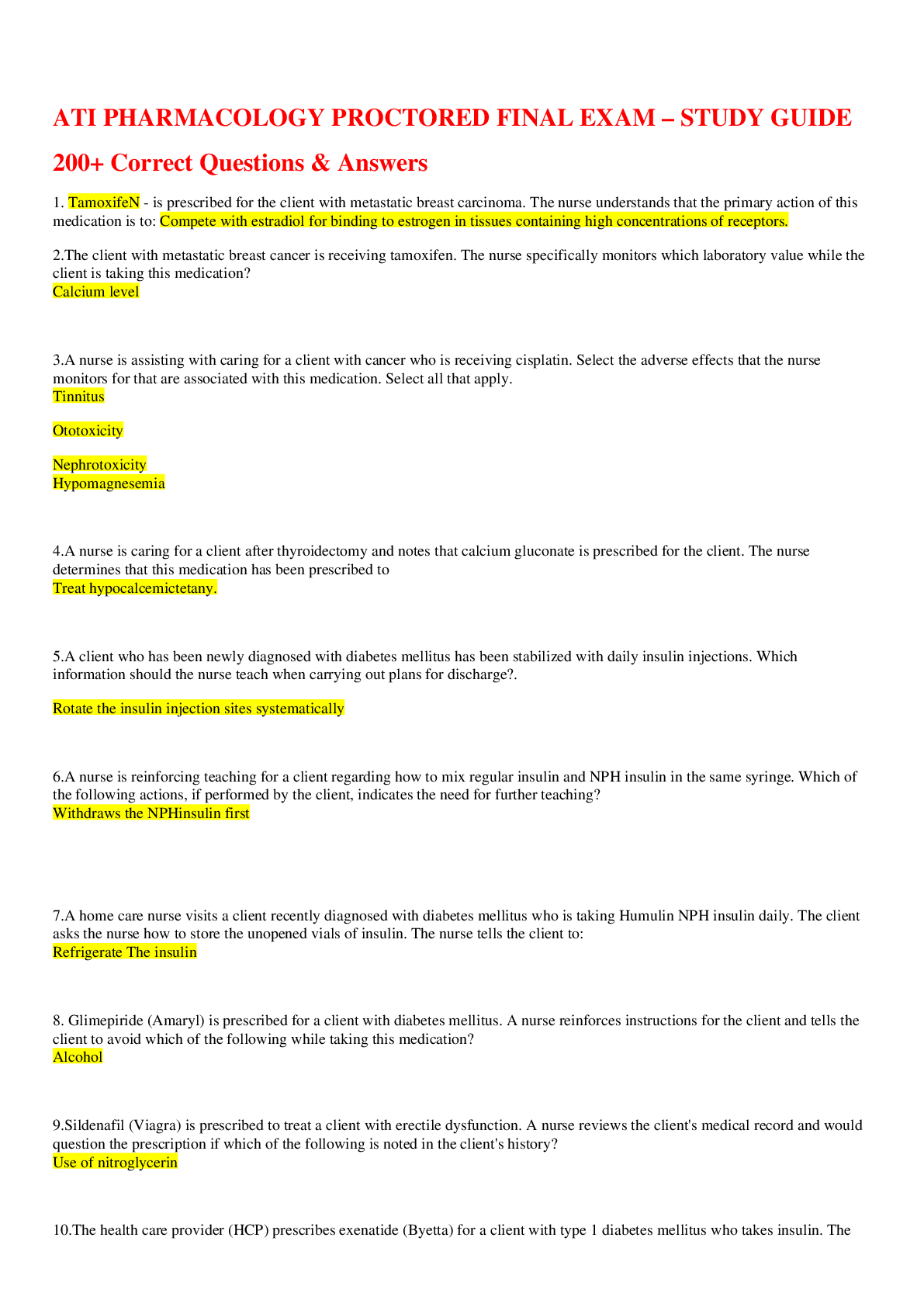
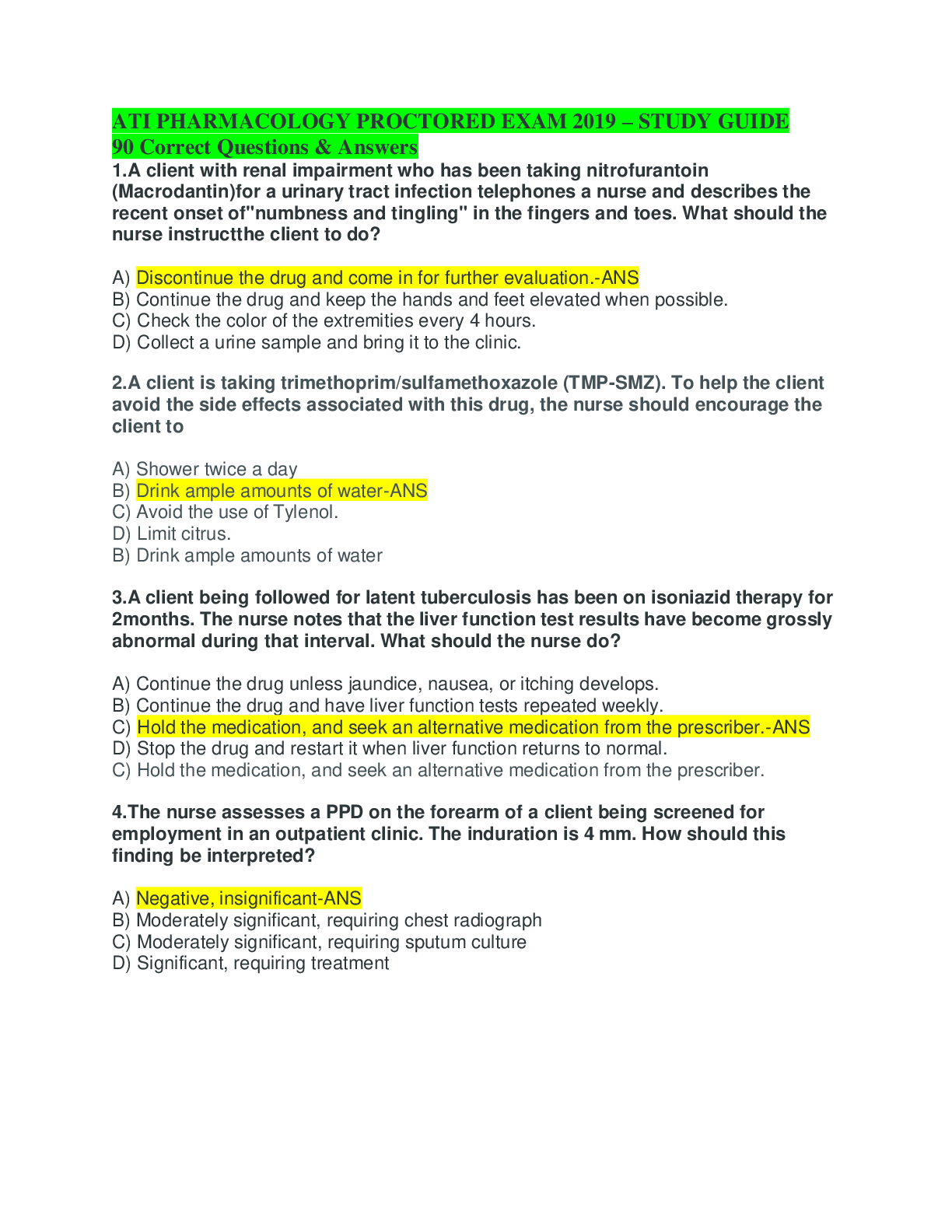
.png)
